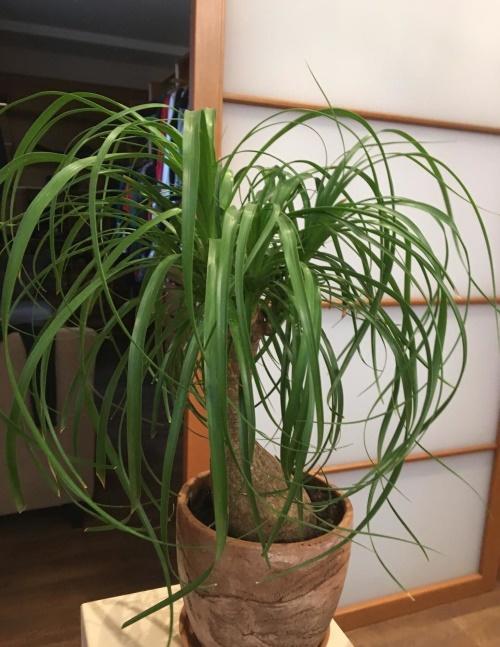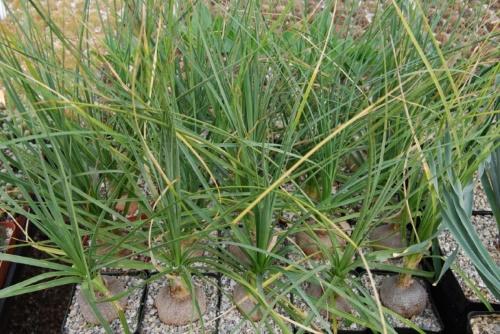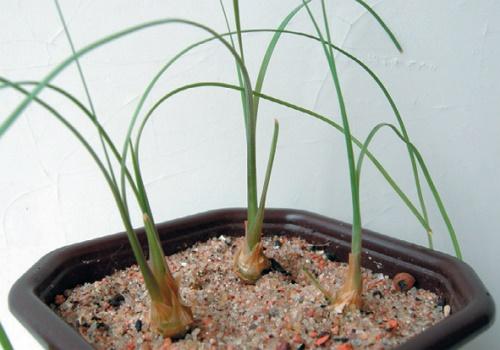How to propagate nolina or bokarney: two proven methods
 For its original shape and unpretentious character, Nolina is gaining more and more fans. It is not surprising that flower growers are interested in the question of how to propagate nolin. Its unusual trunk, decorated with a lush rosette of long narrow leaves, immediately attracts attention. It is strongly thickened at the bottom, and tapers at the top. This structure allows the tree to store moisture and not be dependent on regular watering. Of course, you need to water it, but if a pass occurs, then Nolina will not be offended, and will be content with the moisture collected in the trunk. In addition, the plant tolerates dry air well and adapts to any room temperature. Such an unpretentious flower is just a godsend for everyone.
For its original shape and unpretentious character, Nolina is gaining more and more fans. It is not surprising that flower growers are interested in the question of how to propagate nolin. Its unusual trunk, decorated with a lush rosette of long narrow leaves, immediately attracts attention. It is strongly thickened at the bottom, and tapers at the top. This structure allows the tree to store moisture and not be dependent on regular watering. Of course, you need to water it, but if a pass occurs, then Nolina will not be offended, and will be content with the moisture collected in the trunk. In addition, the plant tolerates dry air well and adapts to any room temperature. Such an unpretentious flower is just a godsend for everyone.
Nolina belongs to the agave family and has many popular names. Among them: bottle tree, elephant's leg, ponytail. In science, the plant is also known as bokarnea.
How to breed nolina: popular ways

Sometimes flower shops sell pots in which 2-3 small trees grow. They can be placed in separate flowerpots.
Propagation of nolina by seeds
 It is best to plant seeds in early spring so that the seedlings have enough light. To increase germination, planting material must be soaked for two days in growth promoter... If at the same time some seeds float up - they need to be selected, because they will not sprout. For growing nolina seedlings:
It is best to plant seeds in early spring so that the seedlings have enough light. To increase germination, planting material must be soaked for two days in growth promoter... If at the same time some seeds float up - they need to be selected, because they will not sprout. For growing nolina seedlings:
- Mix sand with peat and pour into a bowl.
- Spread the seeds over the surface and cover slightly.
- Cover with glass and place on a warm and light windowsill.
- Grown seedlings dive into separate pots, pouring there a special substrate for nolina.
When growing by seed, be prepared for the long wait. The seeds can "sit" in the ground for more than a month.
Features of the rooting of the lateral processes
 Sometimes nolina forms shoots: small rosettes grow in the lower thickened part of the trunk, closer to the soil. They must be carefully cut to avoid damaging the trunk. The wound on it and the cut on the appendix must be covered with crushed activated carbon.
Sometimes nolina forms shoots: small rosettes grow in the lower thickened part of the trunk, closer to the soil. They must be carefully cut to avoid damaging the trunk. The wound on it and the cut on the appendix must be covered with crushed activated carbon.
You can root the shoots immediately in the soil by mixing peat, sand and a little vermiculite for this. At first, it is better to keep them under a jar or bottle, creating the effect of a greenhouse. Periodically remove the shelter, and spray the process.When young leaves appear on it, it means that rooting was successful. The can can be removed, and over time, the young Nolina can be transplanted into a more spacious pot.